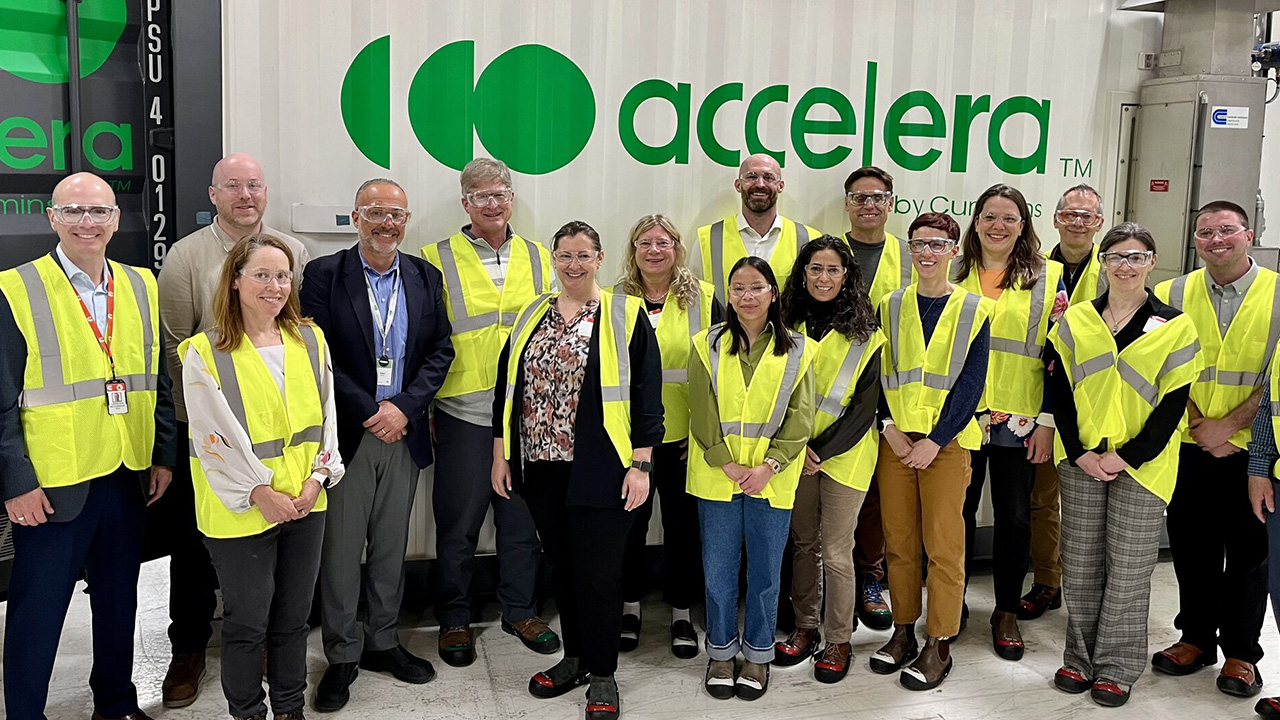
As Minnesota transitions to a clean energy economy, new technologies and climate solutions are taking shape to decarbonize our lives. One of the more interesting new pieces of clean technology is hydrolyzers, which are used to produce green hydrogen, a fossil fuel replacement for hard-to-decarbonize sectors. I recently had the opportunity to tour a factory building these hydrolyzers right here in Minnesota.
The Cummins Inc. and Accelera by Cummins plant in Fridley, Minnesota hosted the Governor’s Advisory Council on Climate Change in April, led by Commerce Commissioner Grace Arnold and Minnesota Pollution Control Agency Commissioner Katrina Kessler. I am one of 15 members of the Advisory Council, appointed by Governor Walz including civic and community leaders, individuals with experience in business, agriculture, conservation, environmental protection, and other relevant stakeholders.
Alex Savelli, one of our members, led the electrolyzer plant tour. Savelli is the Global Commerce Leader for Electrolyzers at Accelera by Cummins. Cummins has more than 600 electrolyzer systems installed worldwide. They provide green hydrogen solutions to customers in various hard-to-abate industries aiming to decarbonize.
Electrolyzers help produce clean hydrogen that is essential for reducing emissions and creating good-paying jobs in manufacturing and industrial sectors. Until 2023, electrolyzers had largely been produced overseas. Cummins’ Fridley plant was the first site to begin manufacturing electrolyzers in the United States.
This was my first time at Cummins, and we Advisory Council members had our numerous questions answered by Savelli and by other employees on the plant floor. The Fridley plant has 1.1 million square feet of floor space, and its 2024 revenues were $34.1 billion. Cummins is very diverse in the products made there, from small “gen-sets” for RVs to large gen-sets for hospitals and data centers that are the size of a large conference room. Cummins runs two shift operations and a lighter third shift. Cummins devoted 90,000 square feet of floor space to launch the electrolyzer part of their business about two years ago.
Electrolyzers help split water (H2O) into hydrogen and oxygen and produce green hydrogen, with only water vapor as a waste product. The “heart” of the electrolyzer is the stack of 412 layers. Cummins manufactures Hylyzer 500, which makes 1 ton of hydrogen per day, its most popular Hylyzer 1,000, using a 2.5-megawatt Proton Exchange Membrane (PEM) which is where the “magic” happens. Accelera now is scaling up electrolyzers, including its Hylyzer XL (100-200 megawatts). With the federal Inflation Reduction Act of 2022, Accelera is moving from pilot projects to standardized sizes. Cummins’ electrolyzer sales started taking off in 2023 with more and more project orders.
Savelli described Accelera’s Destination Zero strategy for reaching zero emissions “rooted in making people’s lives better by powering a more prosperous world… Climate change is an existential crisis. Our world will forever need power.”
If you would like to invite me to speak to your company or civic organization about hydrogen and other big solutions to the climate crisis, please contact me at hamilton@fresh-energy.org.
